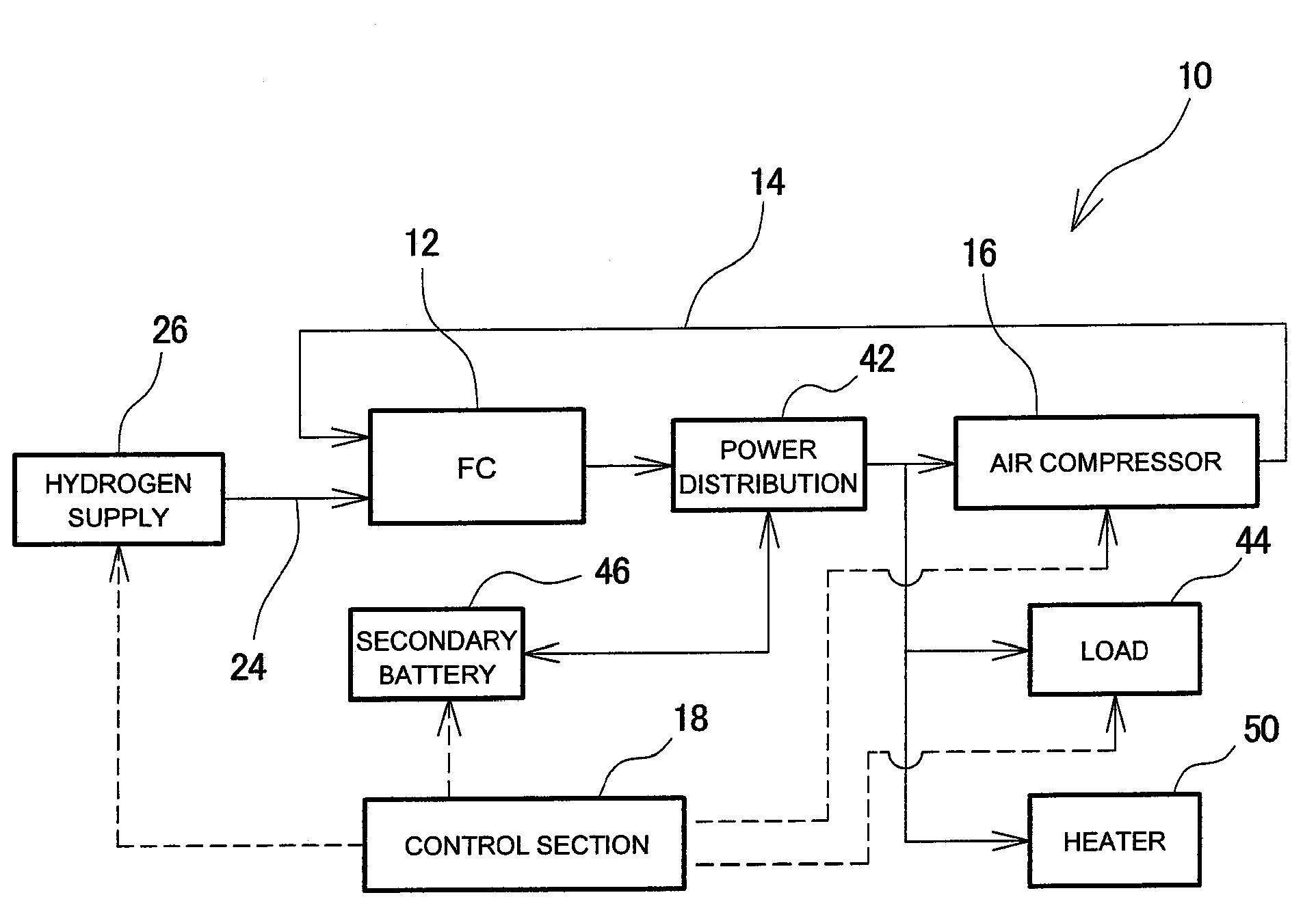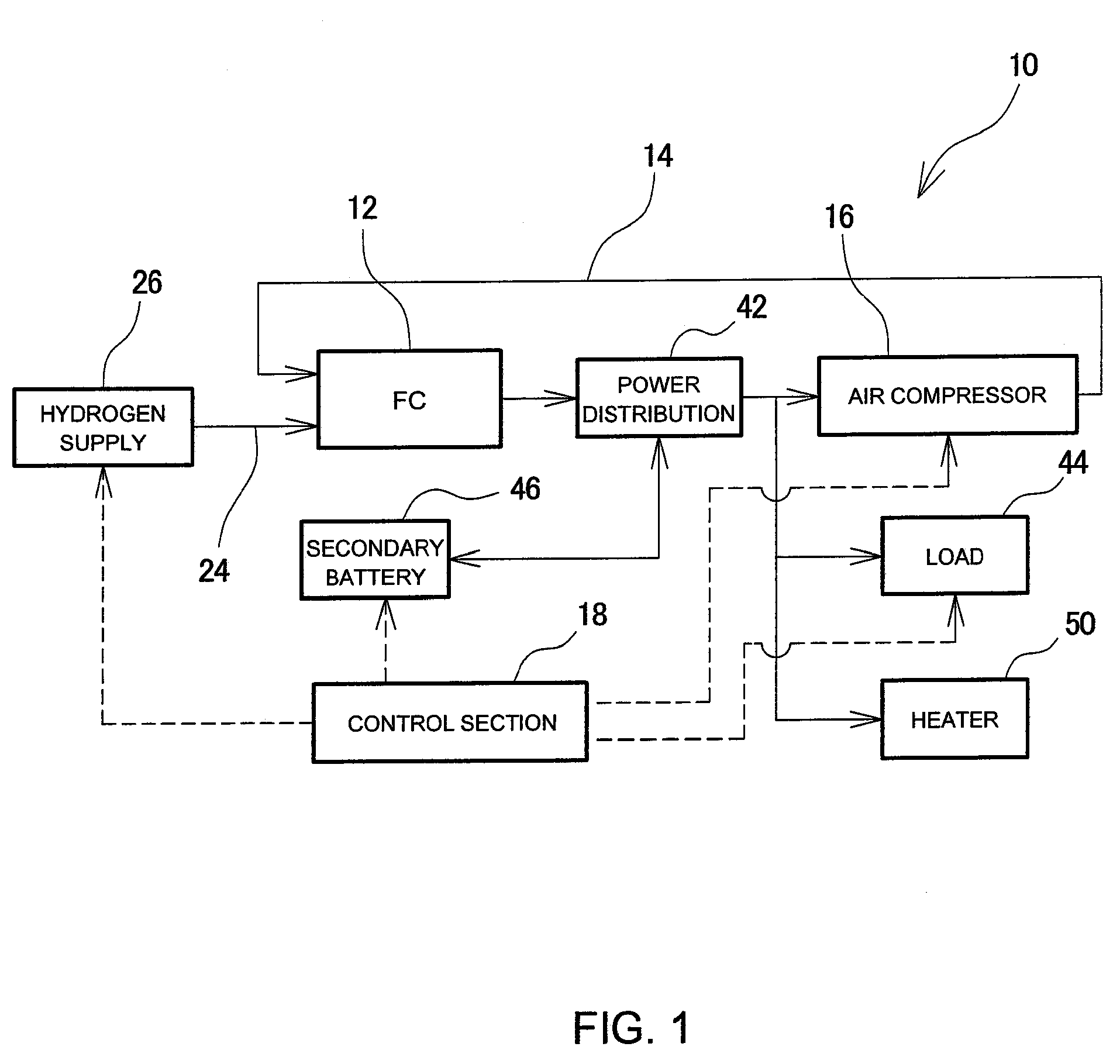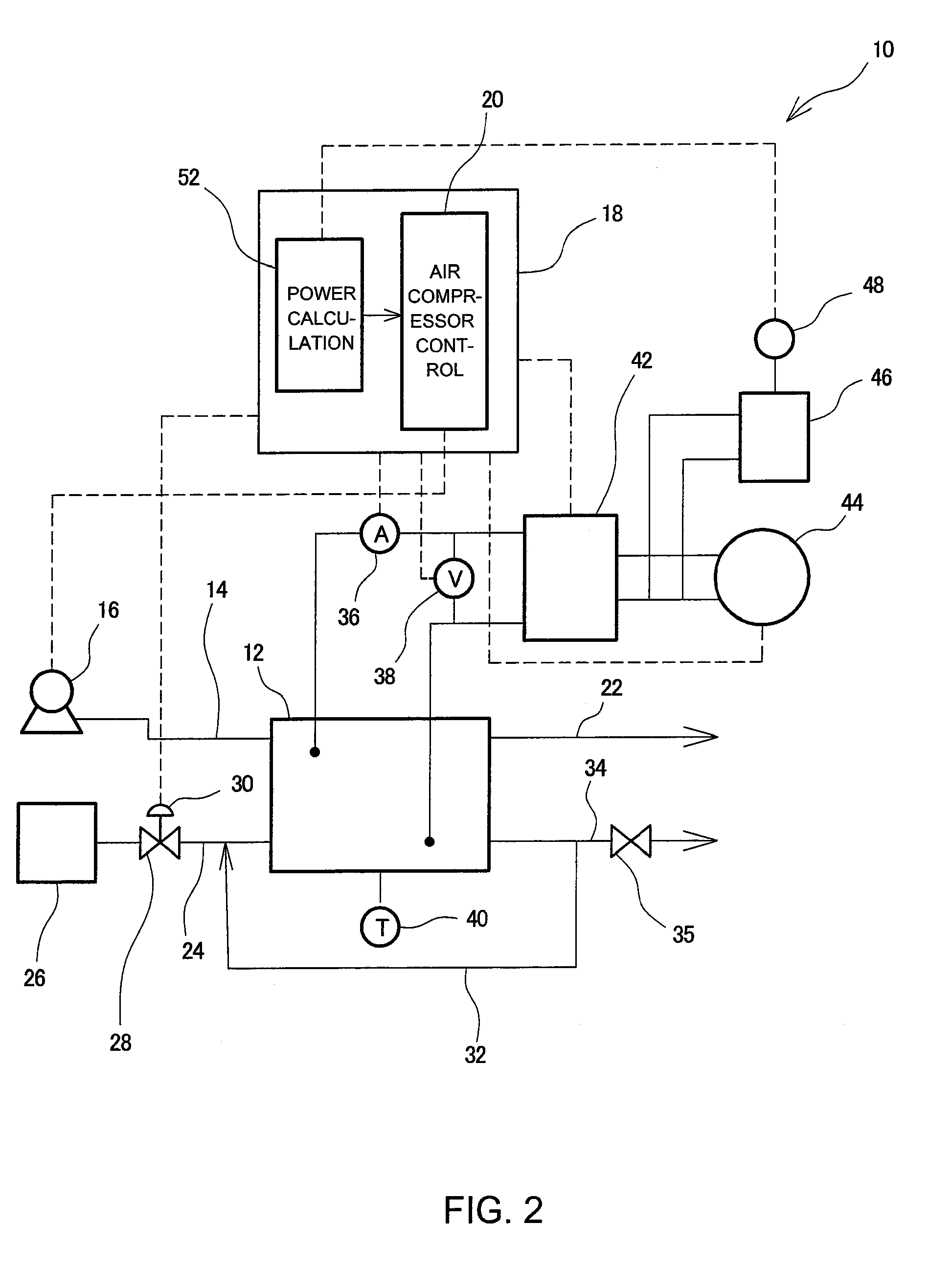Fuel cell system
a fuel cell and system technology, applied in the direction of fuel cells, reactant parameter control, electrical apparatus, etc., can solve the problem of inability to accurately follow the actual rotational frequency change, the possibility of secondary battery overcharge and overdischarge as a result, and the actual power generation level with respect to the target power generation value is excessively decreased, so as to reduce the likelihood of occurrence of an excessive increase, the effect of reducing the probability of an excessive decrease of the power generation level
- Summary
- Abstract
- Description
- Claims
- Application Information
AI Technical Summary
Benefits of technology
Problems solved by technology
Method used
Image
Examples
first embodiment
of the Invention
[0020]Embodiments related to the present invention are explained in detail below with reference to the drawings. FIGS. 1-4 and 7 show a first embodiment of the present invention. FIG. 1 is a block diagram showing a basic configuration of a fuel cell system 10 according to the present embodiment, and FIG. 2 is a configuration diagram showing a detailed configuration of the same embodiment.
[0021]The fuel cell system 10 according to the present embodiment is for use by being mounted on a fuel cell vehicle, and includes a fuel cell stack 12. This fuel cell stack 12 includes a fuel cell lamination structure formed by laminating a plurality of fuel cells, and further includes a current collector plate and an endplate provided at each of the two end portions of the fuel cell lamination structure located along the lamination direction. The fuel cell lamination structure, current collector plates, and endplates are clamped together by use of components such as tie rods and nu...
second embodiment
of the Invention
[0059]FIG. 8 is a flowchart that corresponds to FIG. 3, and shows warm-up control processing for warming up a secondary battery at the time of start-up of a fuel cell system according to a second embodiment of the present invention. In the case of the above-described first embodiment, in step S1 of FIG. 3, the control section 18 (FIGS. 1 and 2) judges whether or not the temperature of the fuel cell stack 12 (FIGS. 1 and 2) is equal to or higher than a given temperature, and, depending on the judged result, the processing proceeds to either a shift to normal operation in step S2 (FIG. 3) or to the warm-up control processing from step S3 (FIG. 3) through step S12 (FIG. 3). In contrast, according to the present embodiment, whether to shift to normal operation or to proceed with the warm-up control processing is selected depending on whether the detected temperature of the secondary battery 46 (FIGS. 1 and 2) is equal to or higher than a given temperature. This procedure...
PUM
| Property | Measurement | Unit |
|---|---|---|
| electric power | aaaaa | aaaaa |
| charge rate | aaaaa | aaaaa |
| power generation | aaaaa | aaaaa |
Abstract
Description
Claims
Application Information
 Login to View More
Login to View More - R&D
- Intellectual Property
- Life Sciences
- Materials
- Tech Scout
- Unparalleled Data Quality
- Higher Quality Content
- 60% Fewer Hallucinations
Browse by: Latest US Patents, China's latest patents, Technical Efficacy Thesaurus, Application Domain, Technology Topic, Popular Technical Reports.
© 2025 PatSnap. All rights reserved.Legal|Privacy policy|Modern Slavery Act Transparency Statement|Sitemap|About US| Contact US: help@patsnap.com



